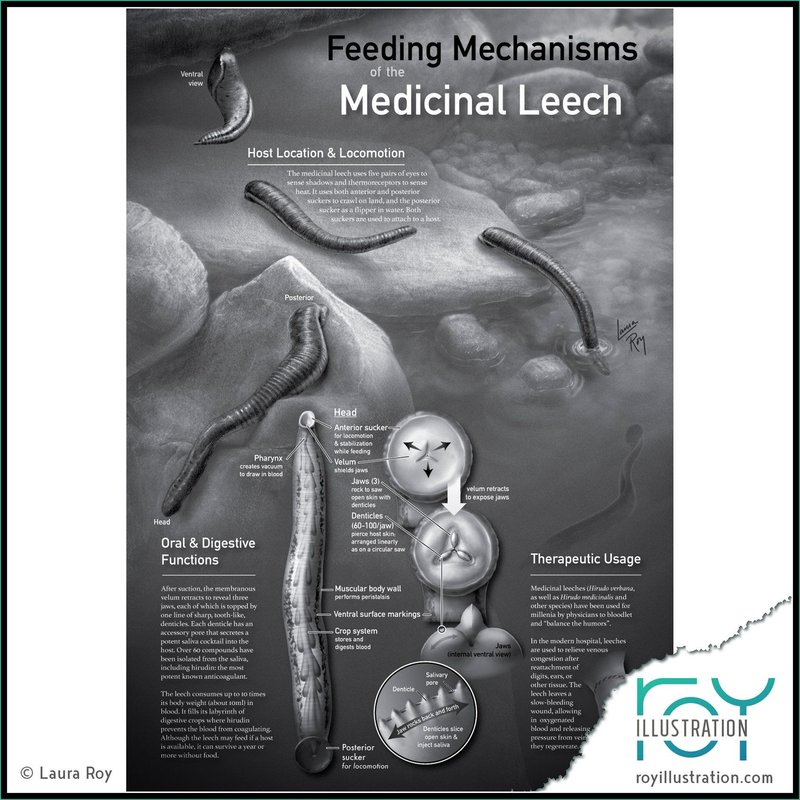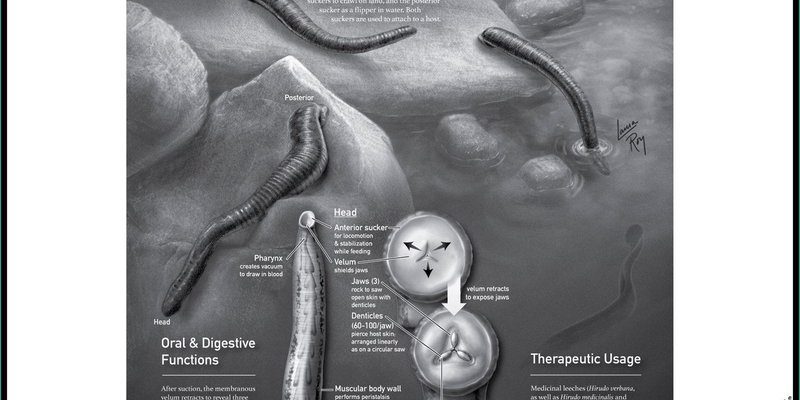
Understanding the feeding mechanism of leeches can be surprisingly interesting! It not only gives insights into their role in the ecosystem, but it also sparks curiosity about how these creatures adapt to their environments. Leeches are part of a group of animals called annelids, which includes worms and other segmented creatures. If you’ve ever been curious about how these creatures eat, let’s dive right in!
What Exactly Is a Leech?
Before we get into their feeding habits, let’s quickly cover what leeches actually are. Leeches are segmented worms that belong to the subclass Hirudinea. They can live in both freshwater and saltwater environments, and they come in various shapes and sizes. Most leeches are about 1 to 10 inches long, with a flat body that’s easy to mistake for a worm or a slug.
Leeches have a unique body structure that allows them to adapt to different environments. The body is divided into segments, and they have suckers at both ends. One is used for movement, while the other is used to latch onto their food. This sucker system is one of the key components of their feeding mechanism, which we’ll explore next.
How Do Leeches Find Their Food?
You might be wondering how leeches know where to find their next meal. They have a pretty nifty way of detecting their surroundings. Leeches use a combination of environmental cues to locate their food. They’re sensitive to vibrations, which helps them sense movement in the water. They can also detect chemical signals released by potential meals, like fish or even larger mammals.
When they sense something nearby, they can swim or crawl toward it. Here’s a fun fact: a leech can move quite quickly when it’s motivated by hunger! They can even sense changes in light, which helps them navigate their environment. This talent for locating food is a crucial step in their feeding mechanism.
The Three Feeding Methods of Leeches
Leeches employ three primary methods to feed: suction feeding, biting and sucking, and filter feeding. Each method varies depending on the type of leech.
- Suction Feeding: Most commonly used by blood-sucking leeches, this method involves attaching to their host with their anterior sucker. They create a vacuum seal, which allows them to suck blood efficiently.
- Biting and Sucking: Some leeches are not bloodsuckers at all. Instead, they prefer to bite into their prey—like small fish or invertebrates—and suck out their bodily fluids. This method is more aggressive and can result in injuries to their victims.
- Filter Feeding: A few leech species are filter feeders. They have specialized structures called tentacles that help them catch tiny organisms suspended in water.
Hearing about these methods gives you a clearer picture of how versatile these little guys can be. Depending on their needs, leeches can adapt their feeding methods to suit their environment.
The Anatomy Behind the Feeding Process
So, how exactly do they pull off this meal? When a leech attaches itself to its prey, it uses its anterior sucker to create a tight grip. This sucker has a special set of muscles that allow it to pull in food almost like a vacuum cleaner. The backside sucker acts as an anchor, allowing the leech to maintain position while it feeds.
Once attached, a leech will slightly extend its pharynx—a tube-like structure that acts like a straw—to begin sucking. Inside its body, the pharynx connects to a muscular stomach, which can expand to hold a substantial amount of blood or fluid. It’s pretty incredible how much they can eat in one sitting, sometimes consuming up to several times their own body weight!
Digestion and the Aftermath
After the leech has feasted, the food doesn’t just disappear. It goes through a fascinating digestion process. The leech’s stomach secretes enzymes that break down the blood or fluid they’ve consumed. This process can take several hours to days, depending on the type of leech and the size of the meal.
Once digested, the nutrients are absorbed into the leech’s body, providing essential energy for movement and reproduction. Surprisingly, leeches can go for months or even years without eating if food is scarce, thanks to their ability to store nutrients.
Why Do Leeches Matter?
Understanding the feeding mechanism of leeches is more than just an academic exercise—it sheds light on their role in the ecosystem. Leeches help control populations of smaller organisms and serve as food for larger animals. They are also used in medical settings for their anticoagulant properties, promoting blood flow in certain treatments.
By appreciating how leeches feed and their ecological significance, we gain a better understanding of the balance within our ecosystems. Even creatures that might seem gross at first play a vital role in keeping nature in check.
Leeches might not be the most lovable creatures in the natural world, but their feeding mechanisms are nothing short of fascinating. From their clever hunting techniques to their efficient digestion, leeches showcase a blend of adaptability and ingenuity. So, the next time you come across a leech, remember that there’s a complex world of biology behind its slimy exterior. They may be small, but they certainly play a big role in the circle of life!

